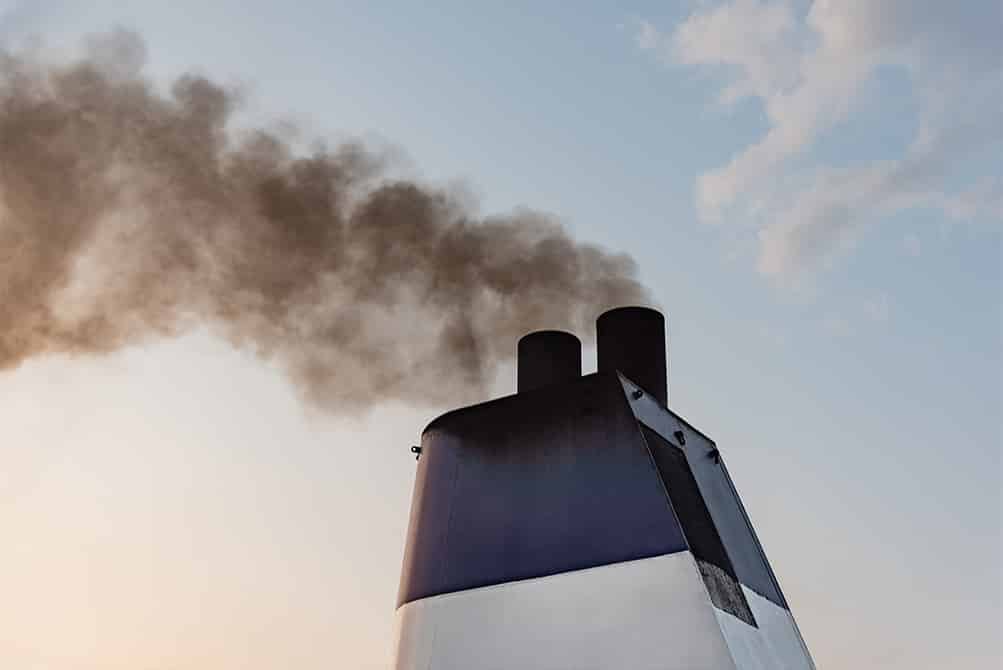Draft new mandatory regulations to cut the carbon intensity of existing ships have been approved by the International Maritime Organization (IMO) Marine Environment Protection Committee (MEPC).
As per the draft amendments to the MARPOL convention, it would be required for ships to combine a technical and an operational approach to reduce their carbon intensity, to be line with the guidelines stipulated by the Initial IMO GHG Strategy, to reduce carbon intensity of international shipping by 40% by 2030, compared to 2008. The amendments were developed by the seventh session of the Inter-sessional Working Group on Reduction of GHG Emissions from Ships (ISWG-GHG 7), held as a remote meeting 19-23 October 2020.
Once adopted at the MEPC 76 section to be held during 2021,the draft amendments would add further requirements to the energy efficiency measures in MARPOL Annex VI chapter 4. As per the current requirements, new build ships have to be designed and built to be more energy efficient than the base line Energy Efficiency Design Index (EEDI), and all ships have to comply with the requirements of the Ship Energy Efficiency Management Plan (SEEMP) which requires the ship operators to have in place a plan to improve energy efficiency through a variety of ship specific measures.
As per the draft amendments, measures are required to be implemented to assess and measure the energy efficiency of all ships and define required attainment values, in order to reduce the carbon intensity of international shipping, as set out in the Initial IMO Strategy on reduction of GHG emissions from ships.
The key requirements of the set of amendments includes: the technical requirement to reduce carbon intensity, based on a new Energy Efficiency Existing Ship Index (EEXI); and the operational carbon intensity reduction requirements, based on a new operational carbon intensity indicator (CII).
The technical measures regarding how the ship is retrofitted and equipped and the operational measures of the ship operates are both addressed with these amendments .
Attained and required Energy Efficiency Existing Ship Index (EEXI)
For ships of400 GT and above, the attained Energy Efficiency Existing Ship Index (EEXI) is required to be calculated, in line with the different values set for ship types and size categories, which gives the energy efficiency of the ship compared to a baseline.
It will be required for ships to meet a specific required Energy Efficiency Existing Ship Index (EEXI), which is based on a required reduction factor, expressed as a percentage relative to the EEDI baseline.
Annual operational carbon intensity indicator (CII) and CII rating.
Ships of 5,000 GT and above, which are subjected to the requirement for IMO-DCS data collection system for fuel oil consumption, are required to have determined their required annual operational carbon intensity indicator (CII). The CII determines the annual reduction factor required to ensure continuous improvement of the ship’s operational carbon intensity within a specific rating level.
The attained annual operational CII which is the actual annual operational CII achieved would be required to be documented and verified against the required annual operational CII, thereby enabling the determination of the operational carbon intensity rating. The carbon intensity rating would be given on a scale – operational carbon intensity rating A, B, C, D or E – indicating a major superior, minor superior, moderate, minor inferior, or inferior performance level, which would be recorded in the ship’s SEEMP- Ship Energy Efficiency Management Plan.
A rating of D for three consecutive years, or E, would require the ship operators to submit a corrective action plan, to show how the required index (C or above) would be achieved.
Review Mechanism.
The IMO will review the effectiveness of the implementation of the CII and EEXI requirements, by 1 January 2026 at the latest to see the necessity to develop and adopt further amendments.
Implementation and Enforcement .
As per the MARPOL treaty it is required to circulate the draft amendments for a period of minimum six months before adoption, which means it can now be adopted at the MEPC 76 session, to be held during 2021. Once adopted, they can enter into force after a minimum 16 months. The procedures for amendment are set out in the MARPOL treaty.
Initial IMO GHG Strategy
The initial IMO GHG Strategy, adopted in 2018, sets ambitious targets to halve GHG emission from ships by 2050, compared to 2008, and reduce carbon intensity of international shipping by 40% by 2030 compared to 2008. The strategy lists a number of candidate measures which could also be considered to further reduce emissions and help achieve the targets in the strategy, in particular 40% reduction of carbon intensity from shipping by 2030. Short-term measures could be measures finalized and agreed by the Committee between 2018 and 2023, although in aiming for early action, priority should be given to develop potential early measures with a view to achieving further reduction of GHG emissions from international shipping before 2023. Dates of entry into force and when the measure can effectively start to reduce GHG emissions would be defined for each measure individually. A procedure for assessing the impact on States of a measure has been approved.
Refer the following link for details.
https://www.imo.org/en/MediaCentre/PressBriefings/pages/42-MEPC-short-term-measure.aspx



